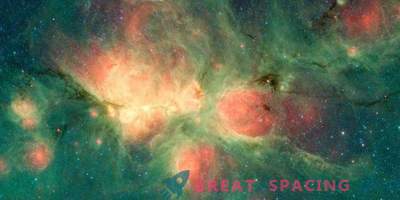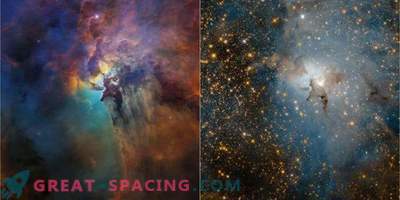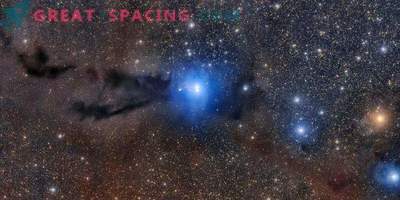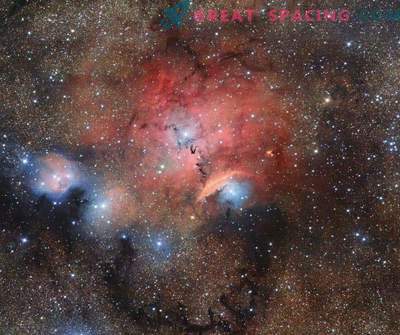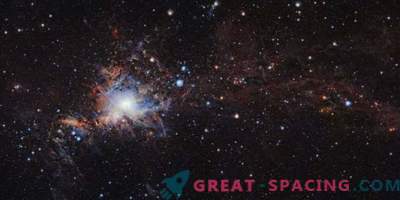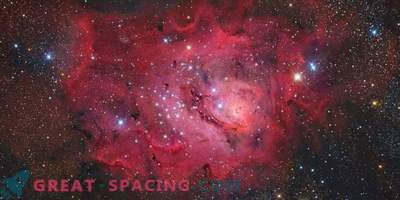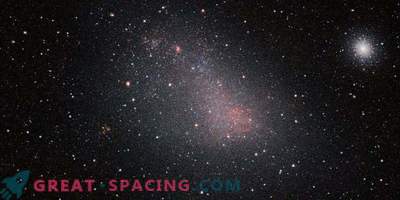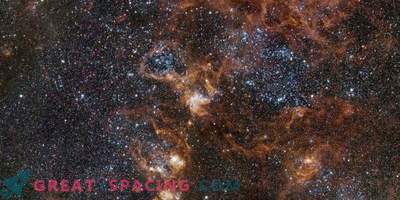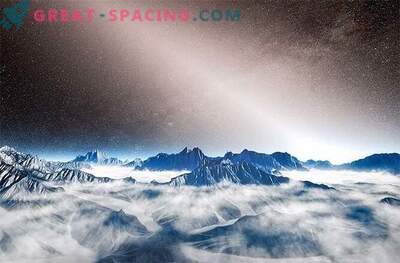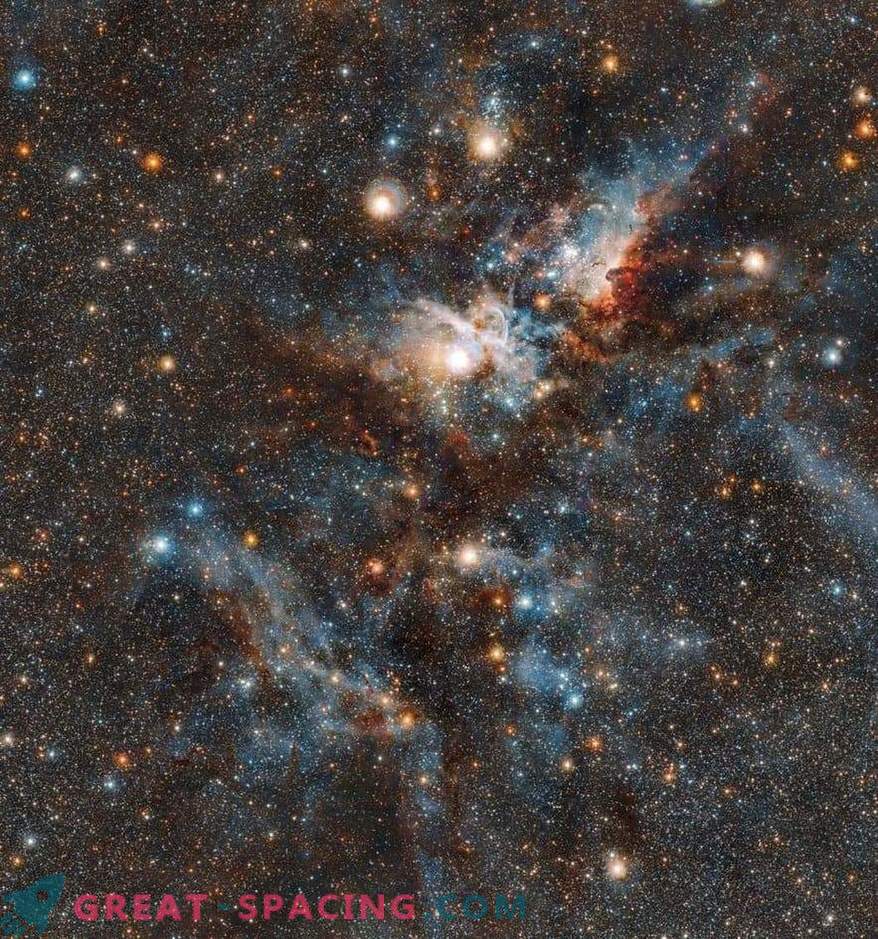
This amazing frame with the Carina Nebula displays a dynamic cloud of interstellar matter and accurately propagated gas and dust. The massive stars inside the cosmic bubble release intense rays that make the gas glow. But in other areas there are dark dust pillars masking the newborn stars.
The Carina Nebula (NGC 3372) is one of the largest and brightest nebulae in the night sky. You can see its magnificence in a photograph taken by the VISTA telescope at the Paranal Observatory (Chile). A review in infrared light made it possible to sneak through hot gas and dark dust to show newborns and dying stars.
At a distance of 7,500 light-years from us, the nebula lives in the constellation of Kiel, where stars form and die next to each other. The nebula created by these processes is a dynamic and developing cloud of finely dispersed interstellar gas and dust. Inside the cosmic bubble are massive stars, causing the surrounding gas to glow. But in other parts of the concentrated dust columns, masking the new stars. As a result, we get a bloody battle between the stars and dust, where new objects always win. The fact is that they create high-energy rays and stellar winds that evaporate and scatter the dusty star nurseries where they formed. The Carina Nebula covers over 300 light-years and is considered one of the largest stellar regions of the Milky Way. It can even be seen with the naked eye in the night sky. But it will only be observed from the southern hemisphere, as it is located 60 degrees below the celestial equator.
The most unusual star system is Eta Carina. This is a real star behemoth most energetic system and ranked first in brightness in the 1830s. Since then it has faded slightly, but still holds the leading position among the most massive and bright stars of the Milky Way. This keel is visible in the picture as a bright spot just above the “V” point formed by dusty clouds. To her right is the small Nebula Keyhole (a small dense cloud of cold molecules and gas, where several massive stars reside).
The nebula was first found by astronomer Nicola Louis de Lackail in the 1750s. Since then, a lot of pictures have been taken, but VISTA (visible and infrared light) opens infrared vision to a large area of the territory, allowing you to find young stars hidden in dust clouds. In 2014, VISTA was used to determine 5 million individual sources of infrared radiation in this nebula. This is the largest IR telescope in the world.
